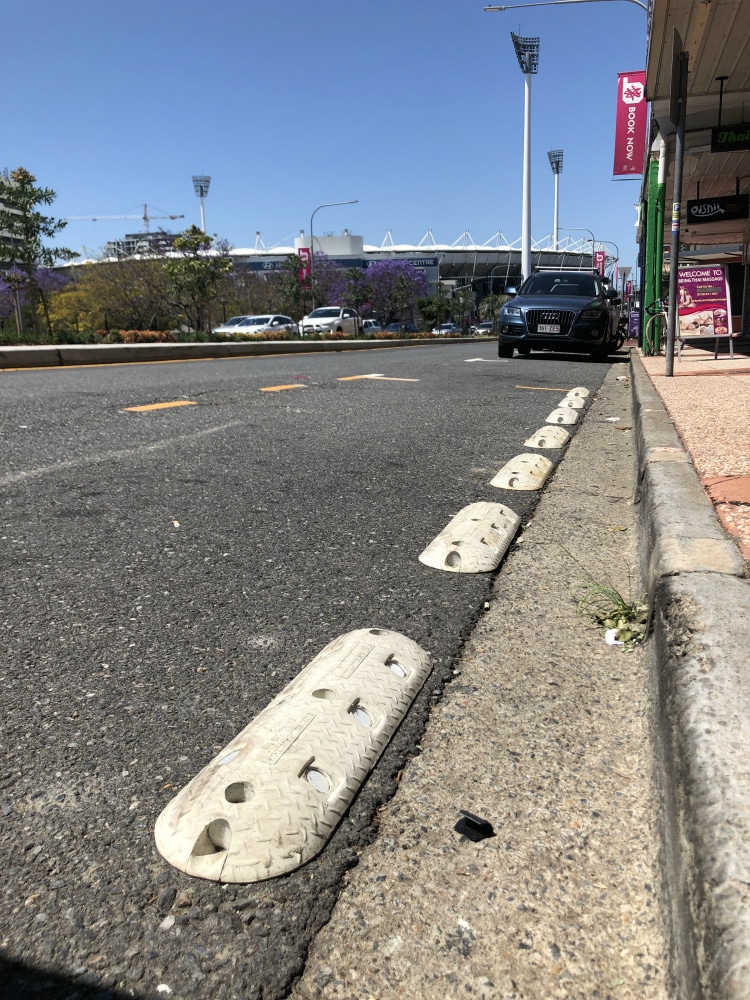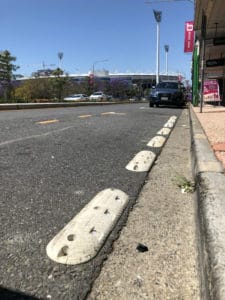When it comes to controlling vehicle speeds, speed humps are one of the most commonly used traffic calming measures. They are meant to slow down cars so that walkers, cyclists, and other people using the road are safer. While speed humps are highly effective, not all types are created equal. Every kind of speed hump comes with its own set of benefits and drawbacks, making it essential to choose the right one for your specific needs.
At Speed Humps Australia, we understand the importance of choosing the best traffic-calming solution. We compare different types of speed humps, highlighting their pros and cons, to help you make an informed decision for your road safety requirements.
What are Speed Humps?
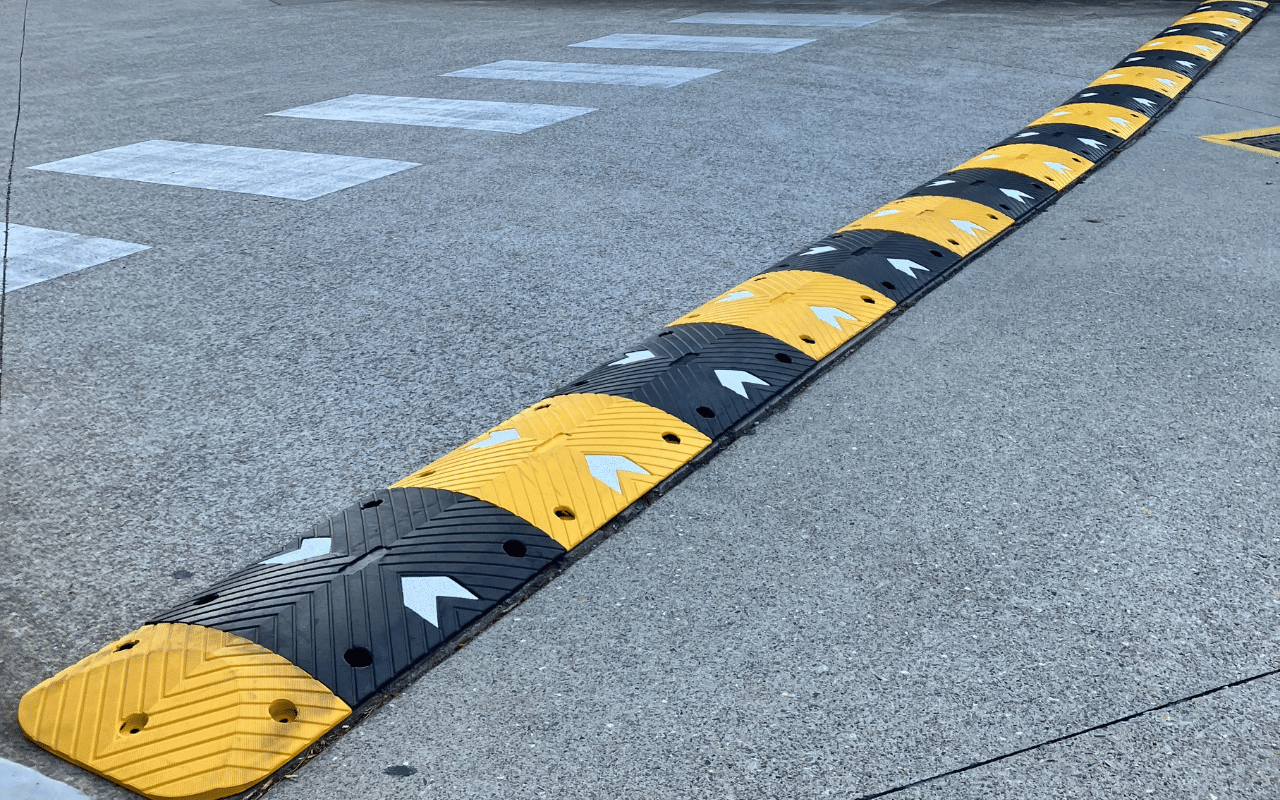
Before diving into the different types of speed humps, it’s essential to understand what they are. Speed humps are raised areas of the road designed to force vehicles to slow down. They are typically constructed using asphalt, rubber, or concrete, varying in height and width depending on the type. Speed humps can be found in a variety of locations, such as residential streets, school zones, parking lots, and private roads.
1. Traditional Asphalt Speed Humps
Asphalt speed humps are a common type of speed hump. They are made by raising a section of the road, typically around 50 -75MM in height, and span the width of the roadway. These humps can be smooth or grooved, depending on the specific design.
Pros:
- Cost-Effective: Asphalt speed humps are relatively inexpensive to install compared to other options like rubber or concrete. Although you will need to close roads for a period of time which can affect vehicle access.
- Durability: When properly maintained, asphalt speed humps can last for many years, providing long-term traffic calming.
- Versatility: These speed humps can be installed in various road conditions, making them suitable for a wide range of locations.
Cons:
- Noise: Vehicles driving over asphalt speed humps can create a lot of noise, mainly if they are driven over at high speeds.
- Wear and Tear: Over time, asphalt can crack or erode due to weather conditions or heavy traffic, requiring repairs.
- Discomfort: For vehicles with low ground clearance, asphalt speed humps can cause discomfort if driven over too quickly.
2. Rubber Speed Humps
Rubber speed humps are made from durable rubber material, making them a popular option for both permanent and temporary traffic control. Because these humps are made to be bendable, they are perfect for short-term uses because they are easy to put in place and take down.
Pros:
- Easy Installation: Rubber speed humps are lightweight and can be installed quickly without the need for heavy machinery or to close the road or driveway for any period of time.
- Cost-Effective: Rubber is generally cheaper than concrete, making rubber speed humps an affordable option for many applications.
- Weather Resistant: Unlike asphalt, rubber does not crack or degrade in extreme weather conditions, making it a reliable option for year-round use.
Cons:
- Aesthetic Appeal: Rubber speed humps can sometimes appear less visually appealing than asphalt or concrete alternatives, especially in residential areas.
- Potential for Wear: Over time, rubber speed humps may wear down, especially in high-traffic areas, requiring periodic replacement.
- Limited Load Capacity: In areas with heavy traffic or larger vehicles, rubber speed humps may not be as effective as asphalt or concrete humps.
3. Concrete Speed Humps
Concrete speed humps are constructed using solid concrete blocks and are often used in areas where durability and longevity are paramount. They are usually designed to last longer than asphalt or rubber humps and can be installed for permanent traffic-calming solutions.
Pros:
- Durability: Concrete is very strong and won’t crack or break under heavy traffic, which makes it perfect for roads that get a lot of use.
- Low Maintenance: Concrete speed humps require less frequent maintenance compared to asphalt humps.
- Effective in High-Traffic Areas: Concrete humps are particularly useful in locations that experience constant traffic or larger vehicles.
Cons:
- High Initial Cost: The installation cost for concrete speed humps is higher than both asphalt and rubber alternatives.
- Harsh Impact: Concrete humps can create a more jarring impact for vehicles, mainly if they are not driven over slowly.
- Limited Flexibility: Unlike rubber humps, concrete speed humps are permanent, which means they cannot be easily moved or adjusted.
4. Rumble Strips or Rumble Bars
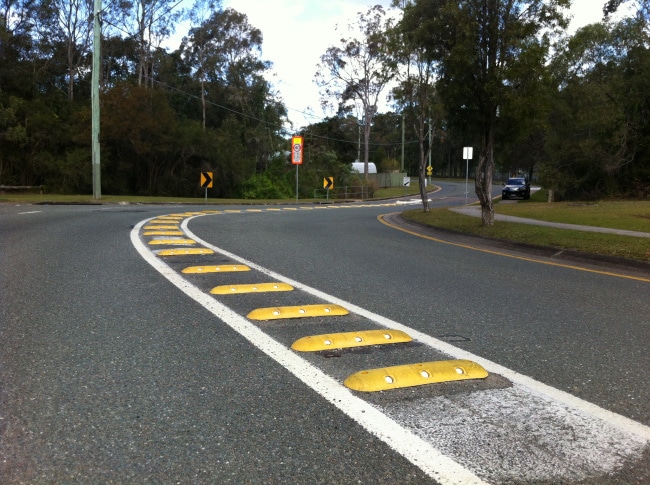
Rumble bars are a unique traffic-calming device often used in combination with speed humps. They consist of a series of raised strips or bumps placed across the roadway, which causes a vehicle to produce a loud noise and vibration when driven over. While rumble bars are not as large or high as traditional speed humps, they are effective in getting the attention of drivers.
Pros:
- Effective at Alerting Drivers: The noise created by rumble bars is highly effective at alerting drivers to potential hazards, such as upcoming speed bumps or intersections.
- Cost-Effective: Rumble bars are usually less expensive to install than speed humps, making them a budget-friendly option for traffic calming.
- Minimal Discomfort: Unlike more prominent speed humps, rumble bars cause minimal discomfort for drivers, making them suitable for areas with high traffic volumes.
Cons:
- Less Effective in Speed Reduction: While rumble bars can alert drivers to slow down, they are not as effective at reducing speed as traditional speed humps.
- Noise Pollution: The noise generated by rumble bars can be disruptive, especially in residential areas, leading to complaints from residents.
- Limited Impact on Heavy Vehicles: Rumble bars might not have as much of an effect on bigger vehicles like buses and trucks as on smaller private cars.
5. Circular Speed Humps
Circular speed humps are another variant, designed to resemble a circular or dome shape when viewed from the side. These humps are commonly used in areas where pedestrian traffic is a concern, as they can be installed near schools or parks to ensure that drivers slow down.
Pros:
- Pedestrian Safety: Circular speed humps are particularly effective in slowing down traffic in areas with high pedestrian foot traffic, ensuring a safer environment for children and other pedestrians.
- Aesthetic Appeal: The rounded design of these humps can be more visually appealing compared to traditional square or rectangular speed bumps, blending better with the surroundings.
- Durability: Like other asphalt or concrete alternatives, circular speed humps are durable and long-lasting.
Cons:
- Limited Effectiveness in High-Speed Areas: Circular humps may not be as effective in areas where vehicles are travelling at high speeds, as they may not generate enough force to slow down fast-moving cars.
- Potential for Damage to Vehicles: In areas with large vehicles or low ground clearance, circular humps can cause damage if not correctly installed.
6. Plastic Budget Speed Humps
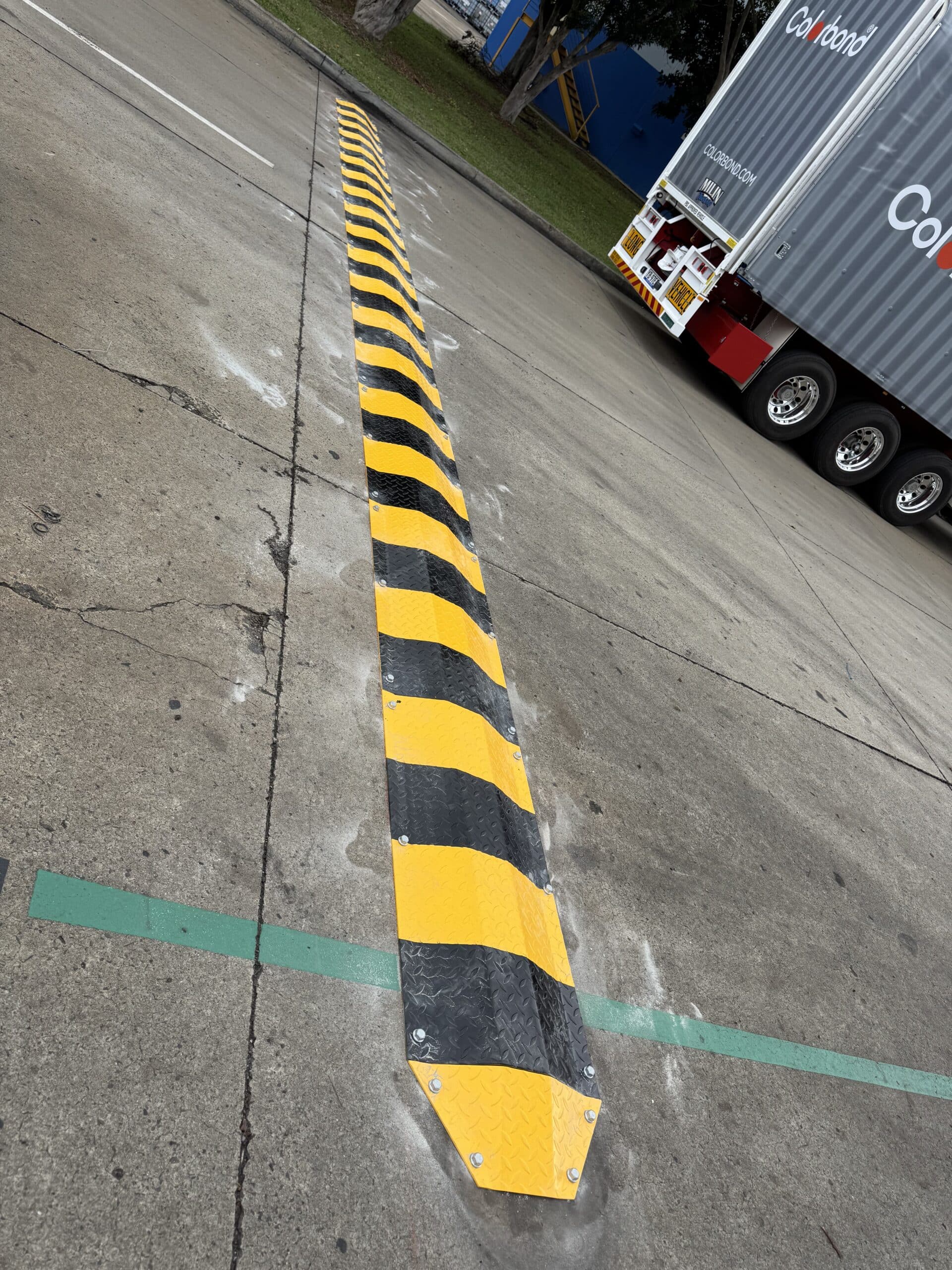
They are often modular, meaning they can be easily installed and removed.
Pros:
- Affordable: Plastic budget speed humps are one of the most cost-effective options available, making them ideal for those on a budget.
- Lightweight and Portable: Their modular design allows quick installation and removal without specialised equipment.
- Minimal Wear and Tear: Plastic speed humps are resistant to cracking, chipping, and corrosion, ensuring durability over time.
Cons:
- Less Effective for Heavy Traffic: Plastic speed humps are not designed to handle large vehicles or high traffic volumes, which may lead to quicker wear.
- Limited Durability: Compared to asphalt or concrete, plastic speed humps may not last as long under constant use.
- May Shift Over Time: If not appropriately secured, plastic speed humps can move out of place, requiring frequent adjustments.
Understanding the Different Types of Car Parking Safety
Selecting the correct type of speed hump for your needs depends on several factors, including the road’s traffic volume, the speed at which vehicles travel, and the level of pedestrian activity in the area. At Speed Humps Australia, we offer a wide range of speed hump solutions to suit every need, from rumble bars to traditional asphalt and concrete humps. You can make an educated choice to improve road safety in your community if you know the pros and cons of each option.

